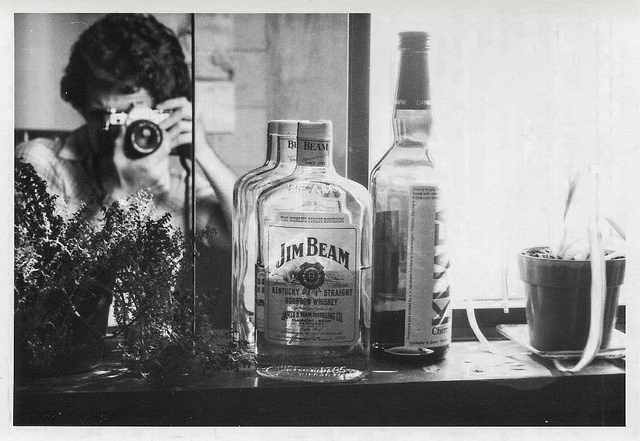Self-sabotage is an art.
Yes, you heard me: we learn to sabotage ourselves.
Self-sabotage is not something we’re born with; it is something that is learned, like a form of art. “What a cruel art form,” you might say, but you must look deeper.
The first moment we learn to sabotage ourselves, our teacher gives us a chisel, and with it, we chip away at our inner perfection, like a sculptor chipping away at a block of marble. It is not easy work. It takes effort and a detail-oriented mind. It takes commitment, perseverance, and intention to use that chisel. And we must keep it sharp. We keep that sculpting tool sharp with an ongoing influx of critical, self-hating, self-deprecating thoughts.
I’ve spent most of my life letting someone else take center stage. I didn’t want to perform in front of an audience; my sister did. I performed supporting roles in her leading role because I loved her and wanted to nurture her talents. That’s what my empathic self naturally did—support others.
I’ve wanted to be a writer and a therapist since I was a little girl twirling in tutus on a basement stage my dad built. But those career aspirations were just fleeting thoughts that seemed to twirl in and out of my mind like those dances I did on the stage when no one was watching. The limelight scared me; it still scares me. When it’s been handed to me in little moments, I blush. When I’ve been given opportunities to shine and share my gifts, I’ve humbly talked myself down with messages like, “It’s only temporary. I don’t deserve this. Someone else should get this light. I want to go back into my hole—my comfortable, isolating cave—and be unseen again.”
Self-sabotage can be as subtle as negative self-talk. It is the whispers no one can hear. It is soft and down curl of a lip and crinkle on a forehead. The master of self-sabotage is the one with the wrinkle that has etched itself into permanent residence down the side of his cheekbone.
You can find it on someone (or at least I can, can you too?) and see the thoughts they are thinking based on the contortions their face makes. A lifetime of ongoing critical thoughts may appear as a forever furrowed brow and wrinkled forehead. There are times when I look at faces like that and they snap me out of my circle of inner criticism. “I don’t want to look like that when I’m a grandma,” I think.
The thoughts, “You’re worthless, you’re replaceable, you’re not enough, you don’t have what it takes,” eventually become background noise. Your ears eventually numb out to the you’re too much of that and not enough of this type thoughts. Instead, they become like background music—they have their own tune that becomes a comfortably uncomfortable inner theme song.
I’ve read books and heard gurus talk about how we can change our inner vibration by replacing our bad thoughts with good ones. They’ve talked of making a low vibration high—with certain tones or chants or frequencies or meditations or mantras. The list goes on.
I will admit, in those moments where my hand got tired from chiseling away at the pristine marble that lay at my core, I tried their techniques. I prayed and chanted and thought sunnier than sun thoughts. Sometimes I dropped my chisel and passed out from sheer exhaustion, echoes of light dancing through my sharp and jabby thoughts. But it was like taking an upper. The high lasted only temporarily—sometimes minutes, hours, and if I was lucky, days, even weeks before I crashed again.
Eventually, I got sick of crashing.
I had a moment recently, where I was on the precipice of getting paid for what I love most: my writing. I needed to have a certain number of submissions in by the end of the month, but I never seemed to make the cut, despite having submitted more than the quota called for. Like all the other times I was on the precipice of something in my life, that voice inside pulled me down into the caverns of hopelessness, and was about to overpower me and force me to give up. Instead, in a glimmer of light, I saw her so clearly—my chisel-holding self. I sat her down, admiring the gleaming silvery tip that rose from her fingers like a flame. I told her, with all the gratitude and love and compassion I had inside of me: “You can stay. I accept you. And thank you for being you.”
In that moment, she f*cking fled for the dark caverns of my soul, but I knew it was only temporary. I knew she was me and I knew why she fled.
“You can’t run away forever,” gently ran across my mind like a whisper. I felt her shuddering inside, so cold, so scared, so alone.
“You’re not alone,” I said. “You and me, kid, we got this. And chisel me all you want. Sabotage to your heart’s content. That marble isn’t real. That, just like you, is a figment of life that I was told was real somewhere along the way.”
I emailed the editor working on a recent piece and she told me, “You’ve been sabotaging yourself. You’ve been re-editing the drafts you’ve already submitted, and when you do that, they get bumped back to the beginning of the pile.” I laughed at myself and felt giddy when I read this. It actually felt so good to know that I was the cause of my own demise here and not the power of the universe.
I spent most of my life trying to throw the blame on others, and not just for the horrible things, but for the good things too. Why? Because taking responsibility felt too foreign to me. If I took responsibility for the good things, that would mean I’d have to take it for the not so good things.
The art of self-sabotage toolkit.
Own the chisel.
Own that self-critic because we all have one. Maybe yours has a sultry voice while mine holds a whip. “Can we embrace the nuances of the critic we have created?” Think of it as a sum of your life experiences so far. Perhaps your first grade teacher gave you the chisel and your mom showed you how to get good at sharpening it. We don’t necessarily need to go deep into the history of its creation, but we do need to understand that we own it; it’s ours. When we realize this, we actually empower our imagination and then we can begin to shift how we relate to our chisel.
Take responsibility for your actions.
This was a big one for me—not sure if it is for you. When I let go of assuming the unknown and start to ask questions, not only to myself but to others (as in the email I sent to the editor) or to life (yes, this can be in a philosophical sense, or in the form of journaling, reflecting, or praying), we are letting go of assumptions and embodying the voice of faith. After all, for every action, there is an equal or opposite reaction. For every question, there is an answer, albeit not necessarily a concrete one. Taking responsibility doesn’t mean you feel good, it means you know. It means you own it. It means you accept that you’re human and sometimes you mess up, just like sometimes you come out on top.
Find gratitude for every attitude.
When we surrender, we melt into a state of compassion. It is only from that compassionate place that the heart can open so that we can be grateful for what is, no matter how sh*tty it may seem at the time. Some of the most freeing experiences I have experienced have started with me feeling absolutely humbled and thankful while lying in a pile of emotional sh*t. After all, if you can love life while covered in the dirtiest, stinkiest stuff around, how can you not love the clean, fresh-smelling stuff?
My friend, I have one hope for you: may you embrace your self-sabotage artist with the gusto of a pig diving into a pool full of mud.
With love from the muck,
A Self-Sabotager.
How to Bike Everyday
Author: Sarah Theresa
Image: oakenroad/Flickr
Editor: Angel Lebailly
Copy Editor: Lieselle Davidson
Copy & Social editor: Nicole Cameron









Read 2 comments and reply